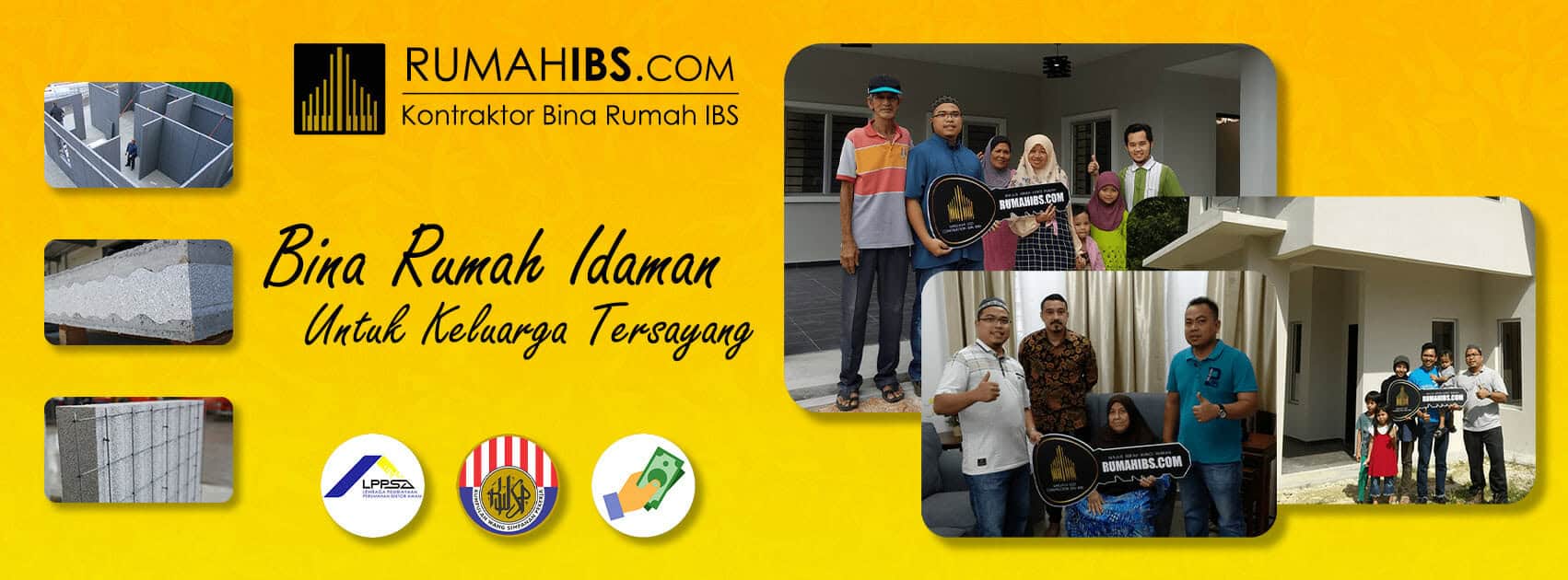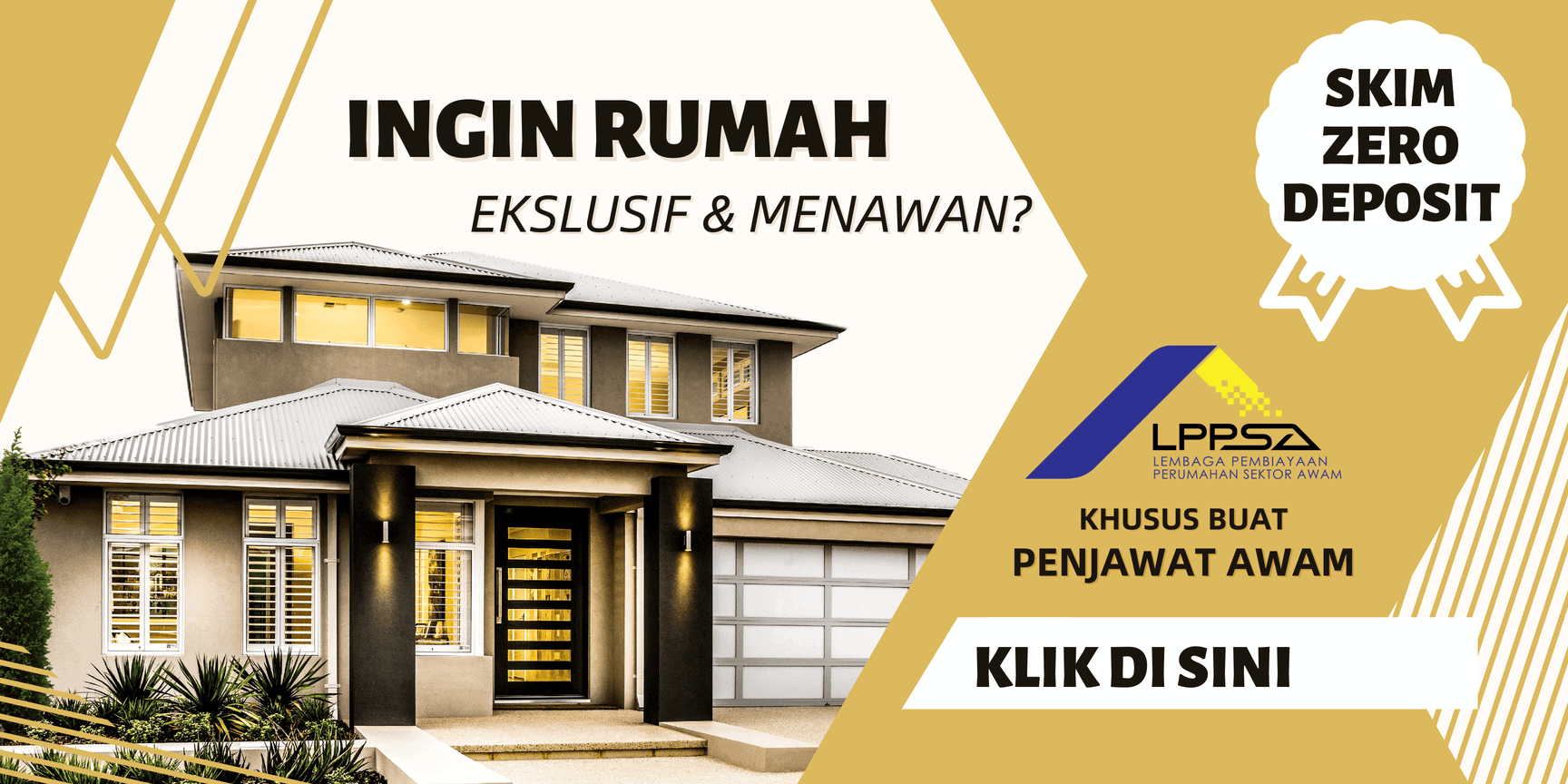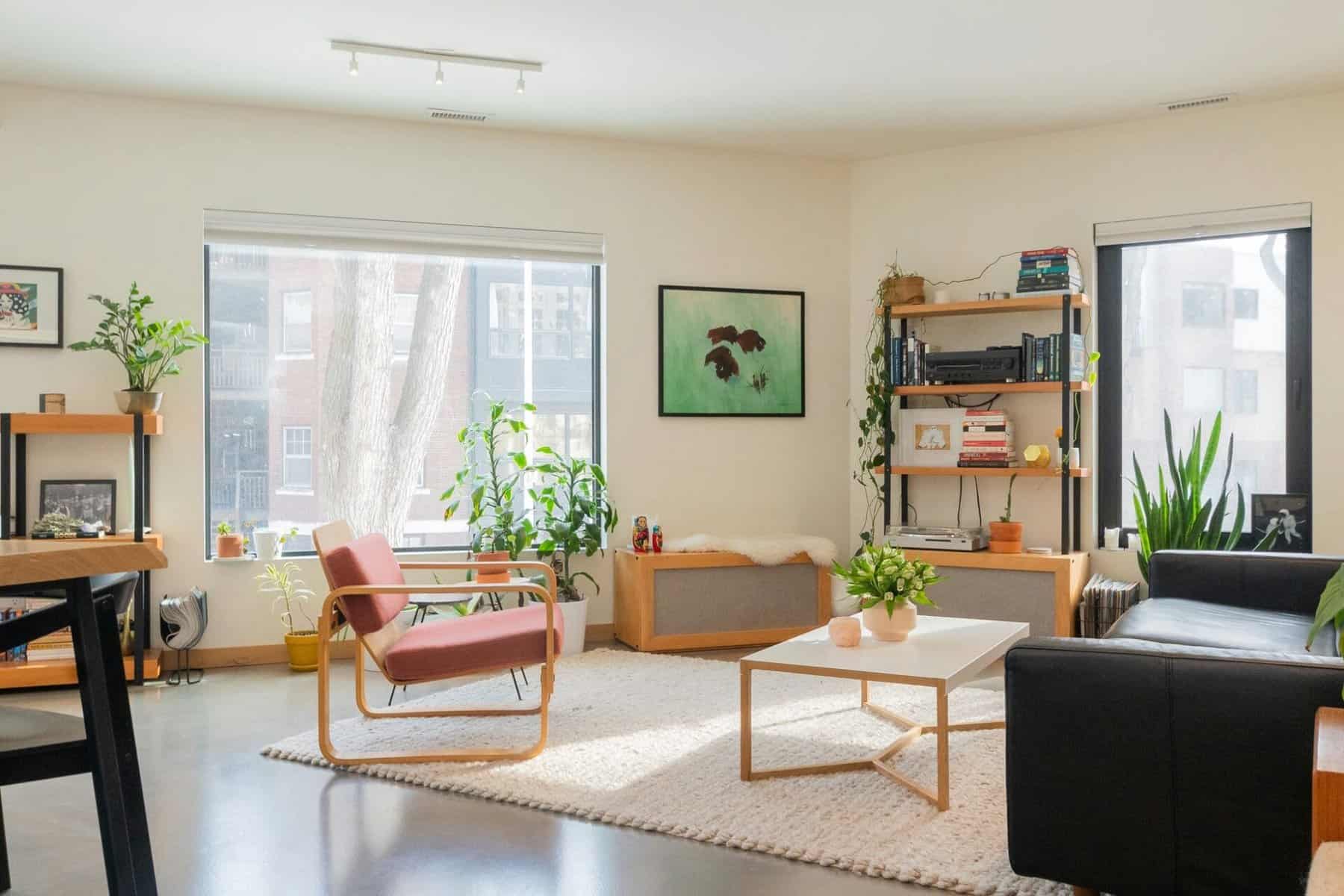
Blog
Navigating the World of Home Construction in 2024: Trends, Costs, and Considerations
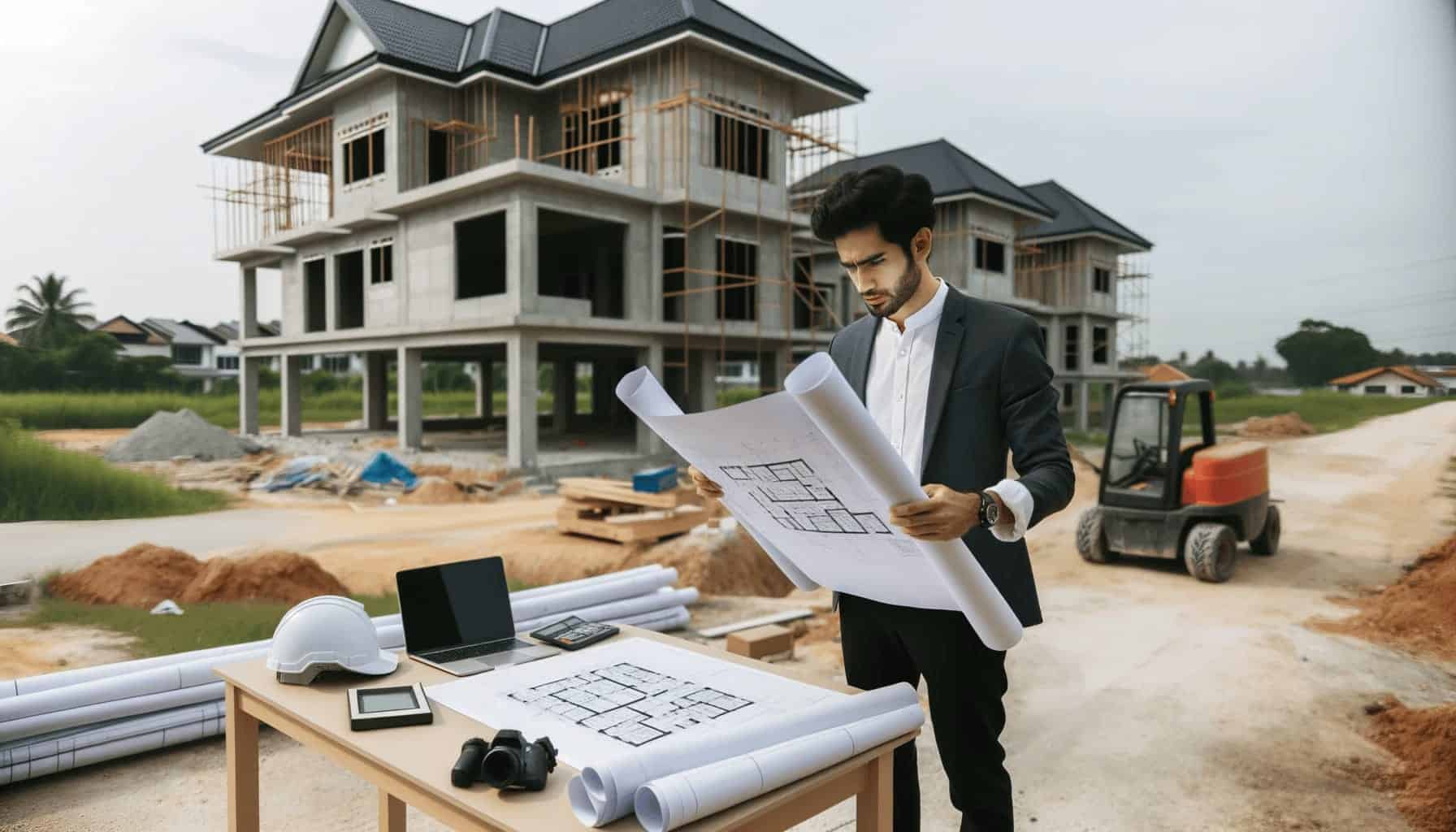
Navigating the World of Home Construction in 2024: Trends, Costs, and Considerations
1. Introduction
In the bustling realm of home construction in Malaysia, 2024 brings forth a landscape ripe with innovation, opportunity, and ever-evolving trends. As we embark on this journey together, it’s crucial to grasp the foundational aspects shaping the construction scene today. Let’s delve into the fundamentals, acquainting ourselves with the terminology, concepts, and overarching themes that underpin the construction domain.
Unraveling the Jargon: Essential Terms in Home Construction
Before diving headfirst into the realm of home construction, it’s essential to familiarize ourselves with some key terms and concepts that serve as the building blocks of this industry. Here’s a rundown of some essential terms you’re likely to encounter along your construction journey:
| Term | Explanation |
|---|---|
| IBS (Industrialized Building System) | A construction method where components are manufactured in a controlled environment and then transported to the construction site for assembly. It offers advantages such as speed, efficiency, and quality control. |
| Contractor | A professional responsible for overseeing the construction project, coordinating various tasks, managing resources, and ensuring that the project is completed on time and within budget. |
| Cost per Square Foot | A common metric used to measure the cost of construction or renovation per unit area. It includes expenses such as materials, labor, and overhead costs, typically expressed in the local currency per square foot. |
Understanding these terms lays a solid foundation for navigating the intricacies of home construction. As we journey deeper into this domain, keep these fundamental concepts in mind—they’ll serve as guiding beacons, illuminating the path forward.
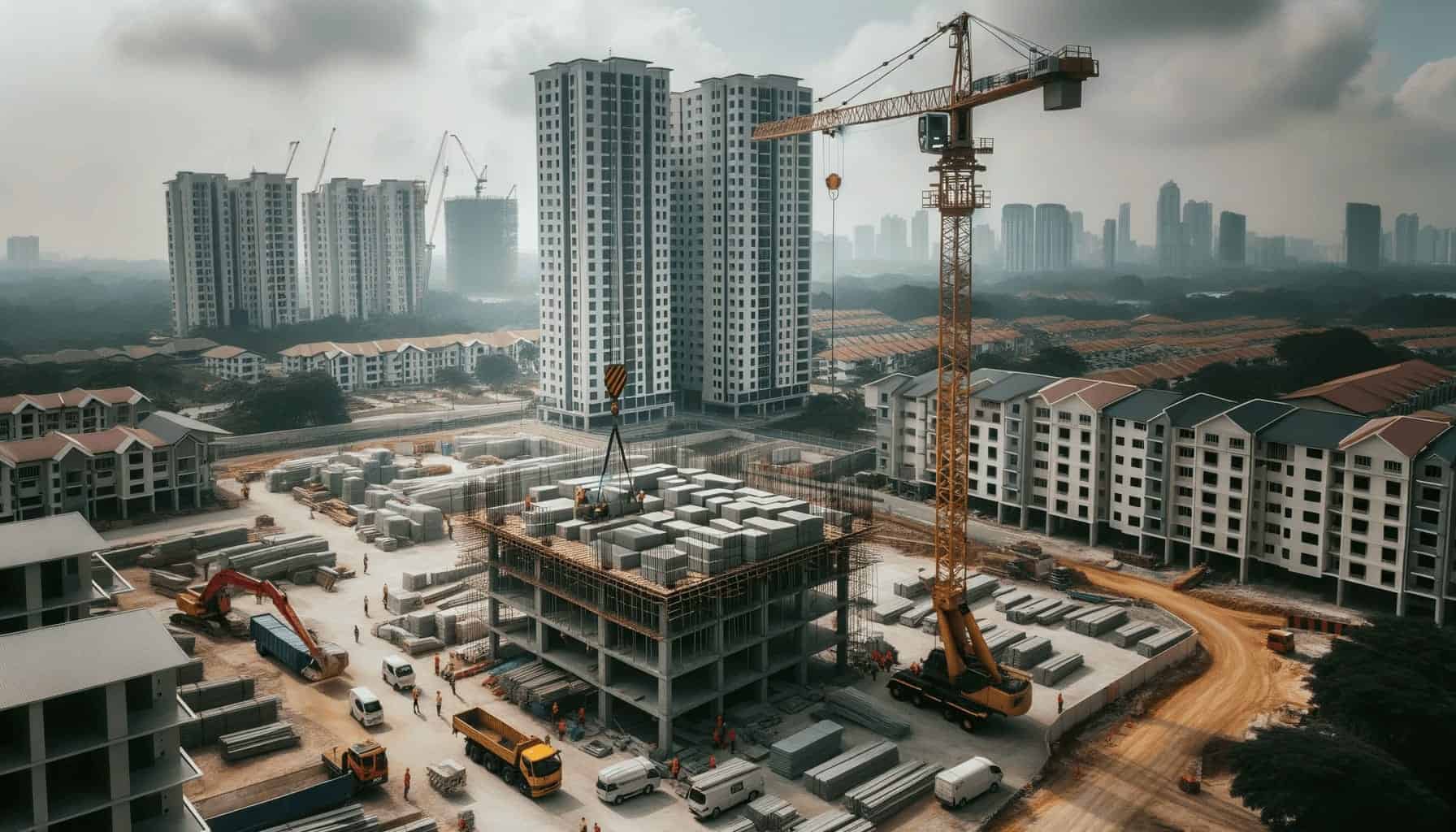
DALL·E 2023 10 19 15.50.08 Photo of a construction crane lifting materials at a residential building site in Malaysia
2. Understanding the Basics: Key Terms and Concepts
Embarking on a home construction project can feel like stepping into a labyrinth of unfamiliar terms and concepts. Fear not! Let’s demystify the jargon and lay a solid foundation for your journey into the world of home construction in Malaysia.
Decoding Essential Terms
1. Industrialized Building System (IBS)
Industrialized Building System (IBS) is a revolutionary approach to construction that involves prefabricating building components in a controlled factory environment. These components, such as walls, floors, and roofs, are then transported to the construction site for assembly. IBS offers several benefits, including:
- Speed: Construction projects employing IBS often experience faster completion times due to the streamlined assembly process.
- Quality: With components manufactured in a controlled environment, IBS ensures consistency and higher quality standards.
- Efficiency: The modular nature of IBS allows for greater efficiency in resource utilization and reduced construction waste.
2. Contractor
A contractor plays a pivotal role in any construction project. This individual or company is responsible for overseeing the entire project, from planning and scheduling to execution and delivery. Contractors coordinate various aspects of the project, including hiring subcontractors, procuring materials, and ensuring compliance with building regulations. Their expertise and management skills are instrumental in bringing your vision to life.
3. Cost per Square Foot
The cost per square foot is a common metric used to estimate the cost of construction or renovation per unit area. It encompasses various expenses, including materials, labor, equipment, and overhead costs. Calculating the cost per square foot allows homeowners and contractors to budget effectively and make informed decisions throughout the construction process.
Practical Applications
To illustrate the significance of these terms, let’s consider a hypothetical scenario: You’re planning to build a new home in Selangor, Malaysia. By understanding the concepts of IBS, contractors, and cost per square foot, you can:
- Explore Construction Options: Learn about the benefits of IBS and decide whether it aligns with your construction goals.
- Select a Contractor: Evaluate different contractors based on their expertise, track record, and ability to deliver within your budget.
- Budget Wisely: Estimate the cost of your construction project by calculating the cost per square foot and adjusting for variables such as location and design complexity.
Armed with this knowledge, you’re better equipped to navigate the complexities of home construction and embark on your journey with confidence.
3. Cost Factors in Home Construction
When embarking on a home construction project in Malaysia, understanding the various cost factors involved is paramount. From labor wages to material expenses, each element contributes to the overall cost of bringing your dream home to life. Let’s delve into the intricacies of cost factors in home construction and how they impact your budgeting decisions.
Exploring Cost Components
1. Labor Wages
Labor wages constitute a significant portion of the total construction cost. Skilled workers such as carpenters, masons, and electricians play crucial roles in bringing your vision to fruition. The prevailing wage rates in 2024 reflect factors such as demand, skill level, and geographic location.
2. Material Costs
Materials are the building blocks of any construction project, and their prices can fluctuate based on market conditions and availability. From cement and steel to tiles and fittings, material costs encompass a wide range of expenses that must be factored into your budget.
3. Equipment and Machinery
The use of specialized equipment and machinery is often necessary to complete construction tasks efficiently. Renting or purchasing these tools adds to the overall equipment and machinery costs of the project.
4. Overhead Expenses
In addition to direct construction costs, there are various overhead expenses to consider, including permits, insurance, and administrative fees. These costs ensure that the project complies with regulatory requirements and operates smoothly from start to finish.
Understanding Cost Per Square Foot
One common method of estimating construction costs is by calculating the cost per square foot. This metric provides a rough estimate of the total cost based on the size of the property. By dividing the total project cost by the total square footage of the home, you can arrive at the cost per square foot, allowing for easier comparison and budgeting.
Budgeting Tips
To effectively manage construction costs and stay within budget, consider the following tips:
- Plan Ahead: Start with a realistic budget and contingency fund to account for unexpected expenses.
- Research Prices: Compare prices from multiple suppliers and contractors to ensure you’re getting the best value for your money.
- Prioritize Needs vs. Wants: Identify essential features and amenities versus optional upgrades to allocate resources wisely.
- Communicate with Your Contractor: Maintain open communication with your contractor to address any cost concerns and explore cost-saving alternatives.
Realistic Expectations
While it’s essential to strive for cost efficiency, it’s equally important to maintain realistic expectations regarding construction costs. Factors such as location, design complexity, and quality standards can influence the final price tag. By understanding the various cost factors and budgeting effectively, you can embark on your home construction journey with confidence and clarity.

DALL·E 2023 10 19 15.49.58 Photo of a detailed architectural model of a modern Malaysian home
4. Exploring Different Building Options
As you embark on the journey of building your dream home in Malaysia, it’s essential to explore the various building options available to you. From traditional construction methods to innovative approaches like the Industrialized Building System (IBS), each option comes with its own set of advantages and considerations. Let’s take a closer look at the different building options and how they can shape your construction journey.
Traditional Construction Methods
Understanding Traditional Construction
Traditional construction methods involve building structures on-site using conventional techniques and materials. This approach has been widely used for centuries and offers a sense of familiarity and flexibility in design.
Pros and Cons
- Pros: Allows for greater customization and adaptability to site-specific requirements. Offers a wide range of architectural styles and design possibilities.
- Cons: Can be time-consuming and labor-intensive. Quality control may vary, leading to inconsistencies in construction standards.
Industrialized Building System (IBS)
Embracing Innovation with IBS
The Industrialized Building System (IBS) represents a paradigm shift in construction methodology. It involves prefabricating building components in a controlled factory environment before transporting them to the construction site for assembly.
Advantages and Considerations
- Advantages: Offers faster construction times, improved quality control, and reduced construction waste. Enhances safety on-site and minimizes disruption to surrounding areas.
- Considerations: Initial setup costs for IBS manufacturing facilities may be higher. Requires coordination with specialized manufacturers and contractors.
Making an Informed Decision
When choosing between traditional construction methods and IBS, it’s essential to weigh the pros and cons carefully and consider factors such as:
- Project Timeline: Determine whether speed or customization is more critical for your project.
- Budget Constraints: Evaluate the upfront costs and long-term savings associated with each method.
- Quality Standards: Assess the level of quality control and consistency required for your project.
Case Study: Comparing Construction Methods
To illustrate the differences between traditional construction and IBS, let’s consider a hypothetical scenario:
| Aspect | Traditional Construction | Industrialized Building System (IBS) |
|---|---|---|
| Construction Time | Longer | Shorter |
| Quality Control | Variable | Consistent |
| Cost Efficiency | Moderate | Potential long-term savings |
| Environmental Impact | Higher | Lower |
By examining these factors, you can make an informed decision that aligns with your project goals, budget, and timeline. Whether you opt for the familiarity of traditional construction or the innovation of IBS, remember that each approach offers its own unique set of opportunities and challenges.
5. Budgeting and Financial Considerations
Embarking on a home construction project in Malaysia requires careful financial planning and budgeting. From securing loans to managing expenses, navigating the financial aspects of construction can be daunting. Let’s explore some essential budgeting and financial considerations to ensure a smooth and successful construction journey.
Securing Financing: Obtaining Loans for Construction
Understanding Loan Options
When it comes to financing your construction project, several options are available, including:
- Construction Loans: Specifically designed to fund construction projects, these loans typically have short terms and require periodic disbursements based on project milestones.
- Home Equity Loans: Leveraging the equity in your existing property to finance construction costs may be an option if you have sufficient equity built up.
- Personal Loans: While less common for construction projects, personal loans can provide additional funding flexibility.
Factors to Consider
Before choosing a loan option, consider factors such as:
- Interest Rates: Compare interest rates from different lenders to secure the most favorable terms.
- Loan Terms: Evaluate the repayment terms, including the duration of the loan and any associated fees.
- Creditworthiness: Lenders will assess your credit score and financial history when determining loan eligibility and terms.
Budgeting Wisely: Managing Construction Expenses
Creating a Detailed Budget
A comprehensive budget is essential for managing construction expenses effectively. Consider the following elements when creating your budget:
- Materials: Estimate the cost of materials based on project specifications and market prices.
- Labor: Factor in labor costs, including wages for contractors and subcontractors.
- Contingency: Allocate a portion of your budget for unforeseen expenses or project delays.
- Permits and Fees: Include expenses related to permits, inspections, and administrative fees.
Tracking Expenses
Throughout the construction process, it’s crucial to track expenses closely to ensure that you stay within budget. Consider using budgeting tools or software to monitor spending and identify areas where adjustments may be necessary.
Managing Cash Flow
Effective cash flow management is critical for ensuring that funds are available when needed throughout the construction process. Consider the following strategies:
- Disbursement Schedule: Coordinate with your lender to establish a disbursement schedule that aligns with project milestones.
- Payment Terms: Negotiate favorable payment terms with suppliers and contractors to optimize cash flow.
- Contingency Planning: Maintain a contingency fund to cover unexpected expenses and prevent cash flow disruptions.
Conclusion: Building Financial Resilience
By prioritizing budgeting and financial considerations, you can build financial resilience and ensure the success of your home construction project. Whether securing loans, managing expenses, or optimizing cash flow, careful planning and proactive management are key to achieving your construction goals while staying within budget.

DALL·E 2023 10 19 15.49.51 Photo of a Malaysian home under renovation with tools and equipment spread around the site
6. Regional Considerations: Focus on Selangor
When embarking on a home construction project in Malaysia, it’s essential to consider regional factors that may impact the planning and execution of your project. Selangor, one of Malaysia’s most populous states and a hub of economic activity, presents unique opportunities and challenges for prospective homeowners. Let’s explore some key regional considerations specific to Selangor and how they may influence your construction journey.
Understanding Selangor’s Housing Landscape
Population Density and Urbanization
Selangor boasts a diverse population and is home to bustling cities such as Shah Alam, Petaling Jaya, and Subang Jaya. As a result, population density is relatively high, especially in urban areas, influencing factors such as land availability and housing demand.
Regulatory Environment
Navigating the regulatory landscape is crucial when planning a construction project in Selangor. Local authorities impose zoning regulations, building codes, and permit requirements that dictate the scope and feasibility of your project.
Cost of Living and Property Prices
Land Prices
Land prices in Selangor vary depending on factors such as location, accessibility, and development potential. Urban areas tend to command higher land prices, while rural areas may offer more affordable options for land acquisition.
Property Values
Property values in Selangor are influenced by factors such as market demand, infrastructure development, and proximity to amenities. Understanding local property values can help you make informed decisions when purchasing land or planning your construction budget.
Environmental Considerations
Sustainability and Green Building Practices
With growing awareness of environmental issues, there is a rising demand for sustainable and eco-friendly construction practices in Selangor. Embracing green building principles can not only reduce environmental impact but also enhance the long-term value and appeal of your property.
Flood Risk and Geographic Features
Parts of Selangor, particularly areas near rivers and low-lying regions, may be prone to flooding during the rainy season. Conducting thorough site evaluations and implementing appropriate drainage solutions are essential for mitigating flood risk and ensuring the safety of your property.
Community and Lifestyle Factors
Amenities and Infrastructure
Selangor offers a wide range of amenities and infrastructure, including schools, healthcare facilities, shopping malls, and recreational areas. Consider proximity to these amenities when selecting a location for your home construction project.
Cultural and Social Dynamics
Selangor’s diverse population contributes to a vibrant cultural landscape, with various festivals, events, and community activities throughout the year. Embrace the rich cultural heritage of Selangor as you plan your construction project and integrate elements that reflect the local community’s values and traditions.
Conclusion: Navigating Selangor’s Housing Terrain
By taking regional considerations into account, you can navigate Selangor’s housing terrain more effectively and make informed decisions that align with your goals and priorities. Whether it’s understanding regulatory requirements, assessing property values, or embracing sustainable practices, embracing the unique characteristics of Selangor will enhance your construction journey and contribute to the creation of a home that truly reflects your vision and values.
7. Planning Your Project: Steps and Strategies
Embarking on a home construction project in Malaysia is an exciting endeavor that requires careful planning and strategic execution. From conceptualization to completion, each stage of the construction process plays a crucial role in bringing your vision to life. Let’s explore the steps and strategies involved in planning your project for a smooth and successful construction journey.
Defining Your Vision: Setting Goals and Objectives
Establishing Your Vision
Begin by defining your vision for the project. What are your goals and objectives? Consider factors such as architectural style, layout preferences, and desired amenities. Clarifying your vision will serve as a guiding framework for the entire construction process.
Conducting Site Evaluations
Conduct thorough site evaluations to assess factors such as topography, soil conditions, and environmental considerations. Understanding the unique characteristics of your site will inform design decisions and help mitigate potential challenges during construction.
Engaging Professionals: Selecting Contractors and Consultants
Researching Contractors
Research and interview multiple contractors to find the right fit for your project. Consider factors such as experience, expertise, and reputation. Requesting bids and references can help you make an informed decision.
Collaborating with Design Professionals
Engage design professionals, such as architects and engineers, to translate your vision into actionable plans. Collaborate closely with these professionals to ensure that your design meets regulatory requirements, budget constraints, and aesthetic preferences.
Developing a Comprehensive Budget and Timeline
Creating a Budget
Develop a comprehensive budget that accounts for all project expenses, including materials, labor, permits, and contingencies. Consider working with a financial advisor or construction cost estimator to ensure accuracy and feasibility.
Establishing a Timeline
Establish a realistic timeline for your project, taking into account factors such as permitting, procurement, construction phases, and potential delays. A well-defined timeline will help you track progress and manage expectations throughout the construction process.
Obtaining Permits and Approvals
Navigating Regulatory Requirements
Obtain necessary permits and approvals from local authorities before commencing construction. Familiarize yourself with zoning regulations, building codes, and environmental regulations that may impact your project.
Partnering with Local Authorities
Collaborate closely with local authorities to ensure compliance with regulatory requirements and streamline the permitting process. Building positive relationships with regulatory agencies can facilitate smoother project execution.
Managing Project Execution: Oversight and Coordination
Establishing Project Oversight
Assign project oversight responsibilities to a designated project manager or construction supervisor. This individual will oversee day-to-day operations, coordinate subcontractors, and ensure that the project stays on track.
Implementing Quality Control Measures
Implement quality control measures to maintain construction standards and ensure adherence to design specifications. Conduct regular inspections and quality assurance checks throughout the construction process.
Conclusion: Embarking on Your Construction Journey
By following these steps and strategies, you can embark on your home construction journey with confidence and clarity. From defining your vision to managing project execution, careful planning and strategic decision-making will pave the way for a successful outcome. Remember to stay flexible, communicate openly with stakeholders, and embrace the journey as you watch your dream home take shape.
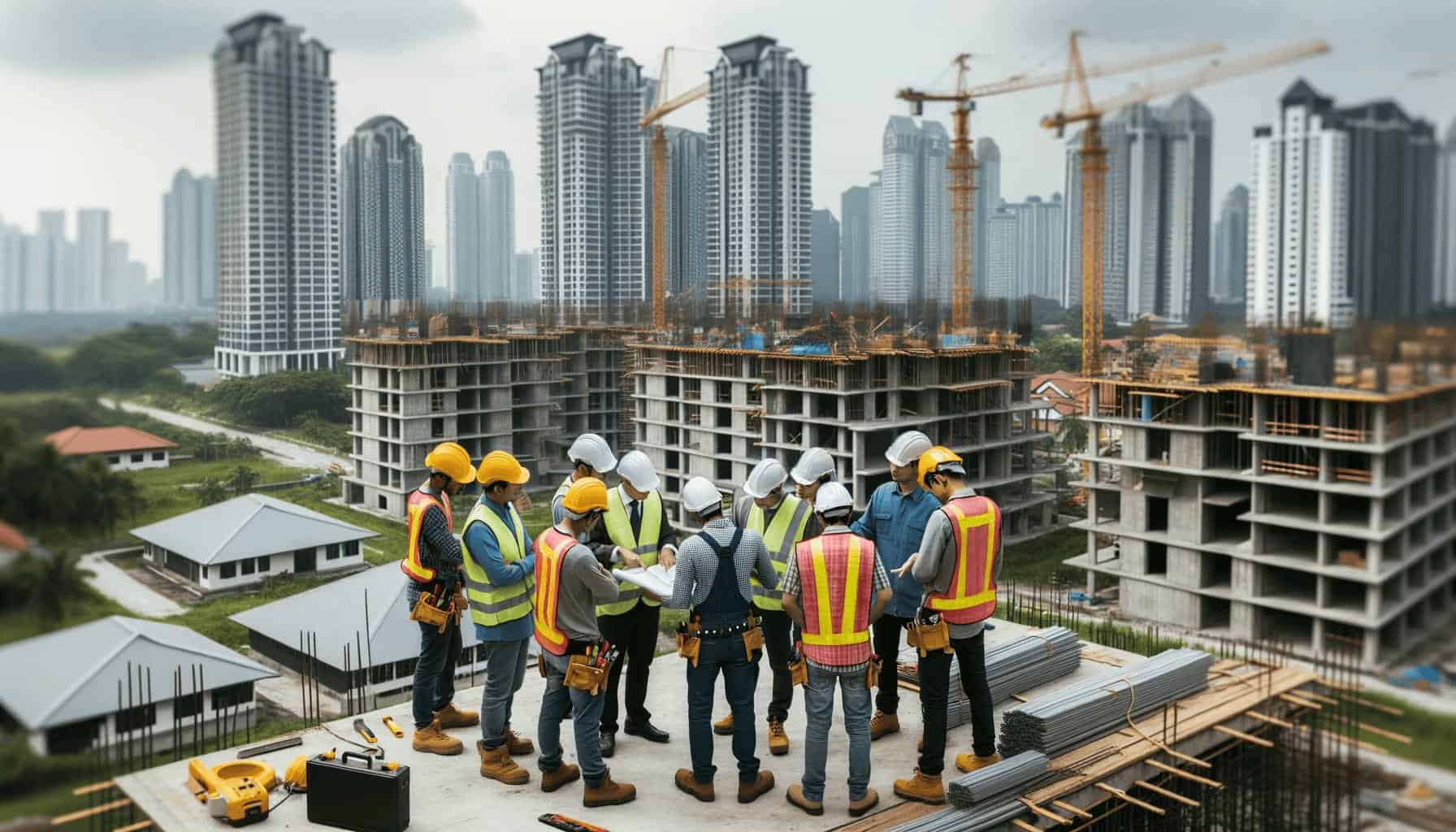
DALL·E 2023 10 19 15.49.36 Photo of a team of construction workers collaborating on a residential project in Malaysia
8. Conclusion: Navigating Your Home Construction Journey
As you reach the conclusion of this comprehensive guide, you’re now equipped with the knowledge and insights needed to navigate the intricate landscape of home construction in Malaysia. From understanding key terms and concepts to exploring regional considerations and planning your project with precision, each aspect covered in this guide contributes to your readiness for embarking on the exciting journey of building your dream home.
Reflecting on Your Learnings
Take a moment to reflect on the valuable information you’ve acquired throughout this guide. From decoding essential terms to exploring different building options and understanding budgeting considerations, you’ve gained a deeper understanding of the multifaceted nature of home construction.
Embracing Your Vision
As you embark on your home construction journey, remember to stay true to your vision. Whether you’re drawn to the familiarity of traditional construction methods or the innovation of Industrialized Building Systems (IBS), trust your instincts and make decisions that align with your goals and preferences.
Building Resilience and Flexibility
While careful planning and strategic decision-making are essential, it’s also important to remain flexible and adaptable in the face of unexpected challenges. Construction projects are dynamic endeavors that require patience, perseverance, and resilience to overcome obstacles along the way.
Leveraging Resources and Expertise
Throughout your construction journey, don’t hesitate to leverage resources and expertise available to you. Whether it’s consulting with contractors and design professionals, seeking financial guidance, or collaborating with local authorities, tapping into the knowledge and support of others can enhance the success of your project.
Celebrating Milestones and Achievements
As you progress through each phase of your construction project, take time to celebrate milestones and achievements along the way. Whether it’s laying the foundation, completing the framing, or putting the finishing touches on your dream home, each step forward is a testament to your dedication and vision.
Conclusion: Your Home, Your Legacy
In closing, remember that building your dream home is not just about constructing physical walls and roofs—it’s about creating a space that reflects your values, aspirations, and legacy for generations to come. Embrace the journey, cherish the memories, and revel in the satisfaction of turning your dream into reality. Your home is more than just a structure—it’s a testament to your vision, perseverance, and the place where countless cherished moments will unfold. Happy building!
